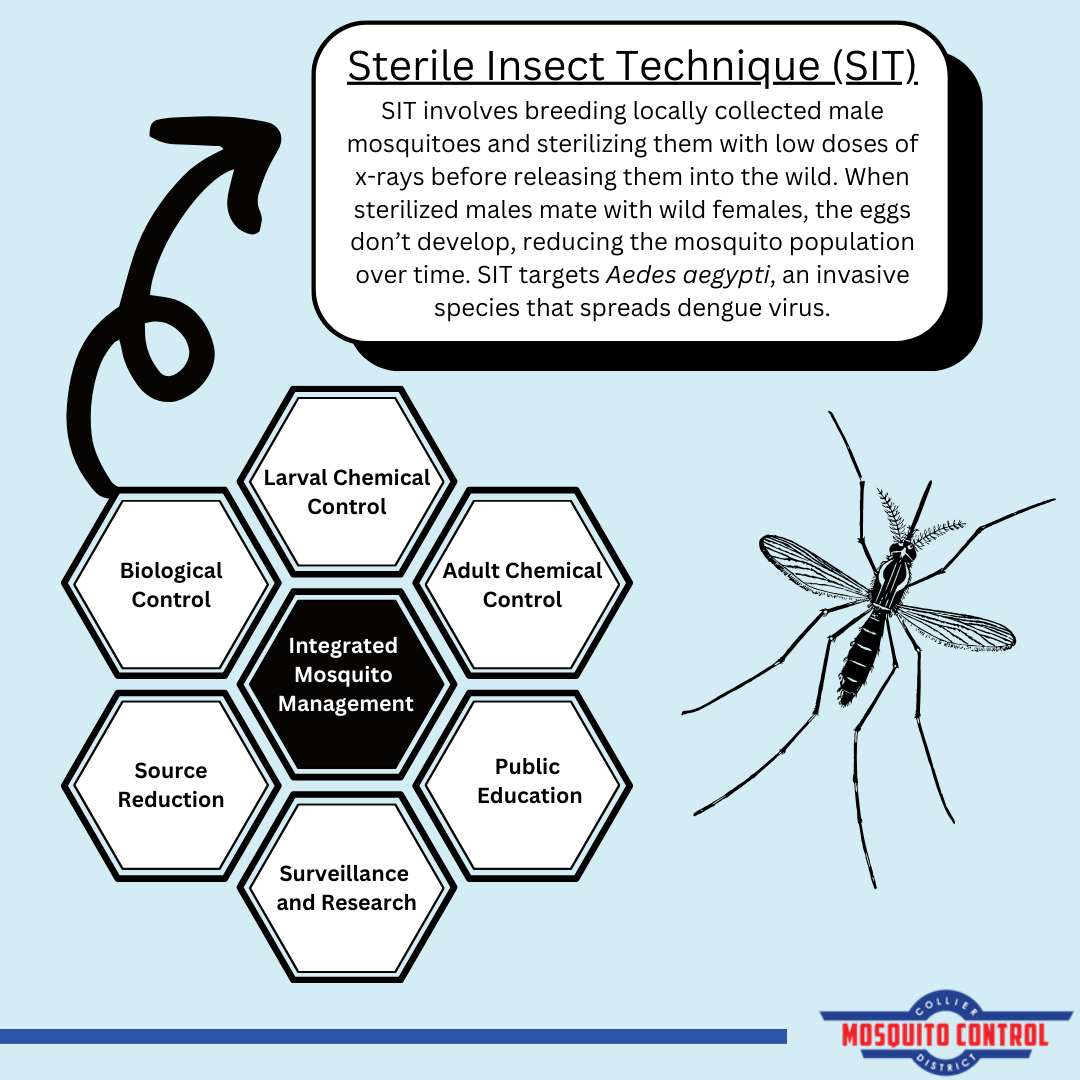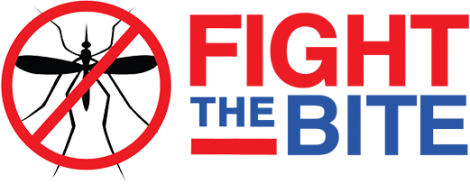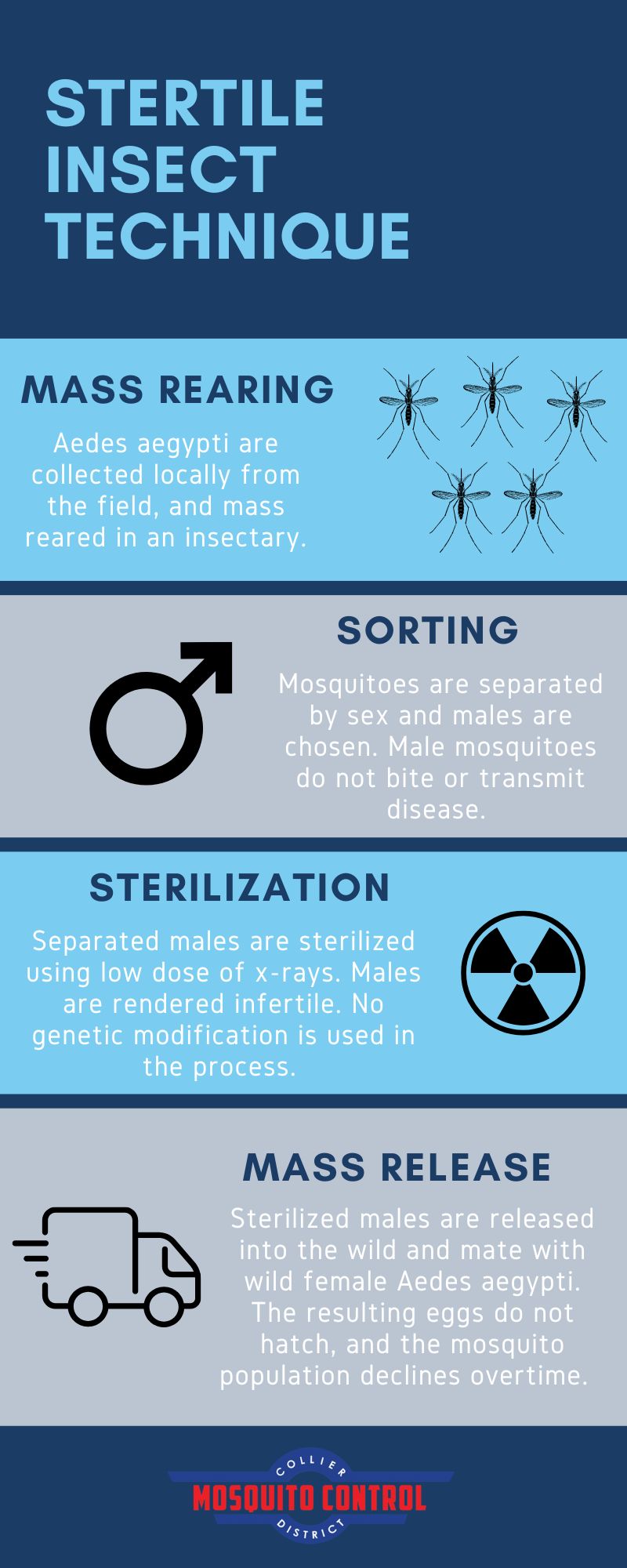Sterile Insect Technique (SIT)
Sterile Insect Technique introduces male mosquitoes who have been sterilized with a low dose x-ray into the wild to mate with females. The resulting eggs are not viable and will not grow into adult mosquitoes. Male mosquitoes do not bite humans and pose no risk to public health.
An Innovative Approach to Mosquito Control
Sterile Insect Technique helps combat the challenges posed by resistant mosquitoes. SIT is a biological approach that takes advantage of mosquitoes’ mating behavior to lower the population over time.


Intervention and Control Zones
FREQUENTLY ASKED QUESTIONS
What is SIT?
Sterile Insect Technique, or SIT, is a biological method of mosquito management. This process involves using a low dose of x-rays to sterilize male mosquitoes and then releasing them into the wild. When the sterilized males mate with wild females of the same species the resulting eggs will not hatch. SIT has been used in the United States since the 1950s to control insect pests. For example, SIT was used to eradicate the screwworm in Florida in the 1960s.
We have enough mosquitoes! Why are you releasing more?
Some species of mosquitoes, such as Aedes aegypti, are resistant to traditional mosquito control methods. This is an invasive species that transmits the dengue, Zika and yellow fever viruses. To enhance our integrated approach to mosquito management, we are evaluating SIT as a biological control method to bring down Aedes aegypti populations and reduce the risk of disease transmission.
Will the SIT mosquitoes you release bite me?
No! Male mosquitoes do not bite. Female mosquitoes require nutrients from blood to assist in egg production. Since male mosquitoes do not produce eggs, they do not require a bloodmeal and do not bite. Only female mosquitoes bite.
Are SIT mosquitoes harmful to humans or other organisms?
SIT is a form of biological and species-specific control. Aedes aegypti is an invasive mosquito species that thrives in urban areas and is not an essential part of the natural ecosystem. Reducing or eliminating the population of this mosquito will not harm native insect-eating animals. Because SIT specifically targets Aedes aegypti mosquitoes, it leaves non-target species, such as bees and butterflies, unharmed. These mosquitoes pose no risk to birds, bats or any other wildlife if they are consumed. Because male mosquitoes do not bite, they also pose no risk to humans and cannot transmit disease.
Are these mosquitoes genetically modified?
No. These mosquitoes are locally sourced from Collier County and bred in captivity. The male mosquitoes are then sterilized using low dose x-rays and released. There is no genetic modification involved in this process.
Why are you starting this program now? And why only in Golden Gate City?
Collier Mosquito Control District is constantly improving our processes and control methods to provide the best possible service for the residents we serve. We are committed to exploring innovative mosquito control strategies that can be incorporated into our integrated mosquito management program. This pilot program will allow us to explore the use of SIT to control Aedes aegypti mosquitoes that are resistant to other treatments and reduce the risk of disease.
Golden Gate City was selected for this program because Aedes aegypti are prevalent in the area. This species is commonly referred to as a “backyard breeder” as it prefers to lay its eggs in small areas of contained water such as buckets, children’s toys, tires, etc.
Will you be releasing mosquitoes in other parts of Collier County?
The results of this program will be monitored and analyzed through 2025. If the program is successful in lowering Aedes aegypti populations, it may be expanded to other urban areas of the county where Aedes aegypti is prevalent.
Can I request SIT mosquitoes be released in my neighborhood?
Collier Mosquito Control District uses a precise approach to provide the most appropriate treatments for each area of the county based on the species of mosquito and habitat in the area. There are currently no plans to allow residents to request SIT releases in their neighborhood, but if the program is successful, we will look into expanding it to other appropriate areas outside of Golden Gate City.
Will SIT replace the insecticides used by mosquito control?
No, SIT and other innovative control methods will not replace traditional mosquito control methods. SIT has the potential to be integrated with other mosquito management strategies, strengthening our control efforts against mosquitoes that transmit disease. All of these strategies work together through an integrated mosquito management approach to provide the best results.
Will SIT releases impact normal mosquito control treatments?
SIT may reduce the need for other mosquito control methods targeting Aedes aegypti as populations are brought down, but it will not reduce the need to control other species of mosquito.
How many SIT mosquitoes are you releasing?
During our 2025 pilot project, we estimate to release nearly 650,000 sterile male mosquitoes in Golden Gate City.
Do other areas in Florida use this technique for mosquito control?
Mosquito control programs in Lee and St. John’s counties have had success using SIT to complement their mosquito control efforts.
How will you know the program is working?
We will be setting over 60 mosquito traps in Golden Gate City, collecting mosquito eggs as well as adult mosquitoes. This trapping will occur in areas where SIT mosquitoes will be released (SIT intervention zone) as well as areas where SIT mosquitoes will not be released (control zone). By comparing hatching rate from collected eggs and adult Aedes aegypti numbers in the SIT intervention zone to control zone, we will be able to gauge the level of success of the program.
If you have any other questions about Sterile Insect Technique or other methods of mosquito control, please email us at info@cmcd.org.


